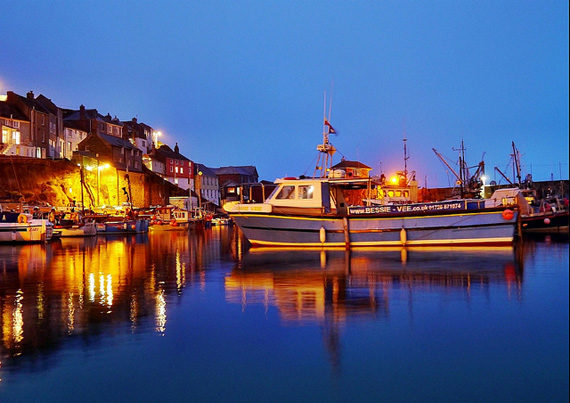Have you ever compared your own photographs to those of a more advanced photographer and wondered how they get their images so sharp? I mean, just look at them! Everything in their photographs is so sharp, so crisp! How the hell do they do it?

Photo by Robert Pittman; ISO 800, f/3.6, 1.6-second exposure.
When I first started out with photography these were things that were going through my mind constantly. I knew how to take somewhat sharp photographs, but then there’s that other level of sharpness, known as “tack” sharp. Tack sharp is basically the absolute best clarity your image can have.
So how do you take tack sharp photographs? Well there are a couple of things that can help you get your images as sharp as possible:
Digital photography tip #1: Use a tripod
This can be somewhat of a sensitive point. Using a tripod is annoying. It’s a bulky, cold, heavy piece of equipment that slows you down immensely when you are taking pictures outdoors. On the other side it’s the best way to get to tack level sharpness. You can have the steadiest hand in the word, even the slightest movement can cause your photograph to look fuzzy.
Digital photography tip #2: Use a timer
If your camera has a timer, use it. You are basically trying to eliminate as much movement as you possibly can. I might be a slower way to take photographs but remember we are aiming for quality here and not quantity.
Digital photography tip #3: Lenses
This digital photography tip might be a bit out of your control right now but the better your lens is the sharper your photographs will be. Most digital cameras come with a standard lens that’s usually a small zoom lens (18 mm to 55 mm for example). The problem with these lenses is that they have a lot of moving parts on the inside and if you want a quality one it costs a small fortune. If you don’t have a super expensive lens don’t worry, there are other ways to get maximum sharpness.
Digital photography tip #4: Aperture
Most lenses are at their sharpest when they are about 2 stops down from wide open. Let’s say you have a 18 mm – 55 mm f/3.5 lens. If you make sure your aperture is around f/8.0 when you take your photograph you have a better chance of it being tack sharp.

Photo by Dan Nguyen; ISO 1250, f/3.2, 1/160-second exposure.
Digital photography tip #5: Shutter speed
The shorter your shutter speed the less chance you have of getting motion blur. If you want tack sharp photographs, motion blur is your enemy. If you are taking pictures of flowers then a shutter speed of 1/250 might be more than enough to eliminate motion blur, but if you are at a sports even it’s not even close to being enough. The faster your object moves the faster your shutter speed has to be. In case of a sports even your shutter speed will have to be something like 1/2000 – 1/4000.
These are just a couple of tips to increase your chances of getting tack sharp photographs. Like I said earlier you are basically trying to eliminate as much motion blur or movement as possible. If you want to learn more check out my blog.
About the Author:
Robin Lipton is a photography enthusiast who blogs about all things photography.
Like This Article?
Don't Miss The Next One!
Join over 100,000 photographers of all experience levels who receive our free photography tips and articles to stay current:






So achieving tact sharp images in military photojournalism (i.e. no tripod) in low/natural light at f/8-f/11, 1/250-1/500 and an ISO low enough to prevent noise overload is possible?
“So achieving tact sharp images in military photojournalism (i.e. no tripod) in low/natural light at f/8-f/11, 1/250-1/500 and an ISO low enough to prevent noise overload is possible?”
Maybe, maybe not. The image may be blurry if the focal length is too long. Brace the camera to minimize motion.
“Tack sharp”, yeah I want that !
Oh, this article is just beginner’s focusing rules.
try sports shooting at 1/1250. I learned it from a friend who is a sports photographer and it really works.
Funny, just today I was reading the section of getting tack-sharp photos in “The Digital Photography Book, Vol. 1” by Scott Kelby. One of the things he talks about, which I didn’t see in here is using the Unsharp Mask in Photoshop.
I tried it today in The GIMP, and it really makes an incredible difference. Give it a try yourself.
Yes I was thinking about the remote option as well and wondering why that wouldnt work just as well. Wonderfull tips though! Thanks for sharing
I would also recommend using a remote control instead of a timer. It’s faster and there are several inexpensive models available. Also, use the mirror lock-up option if your camera supports it.